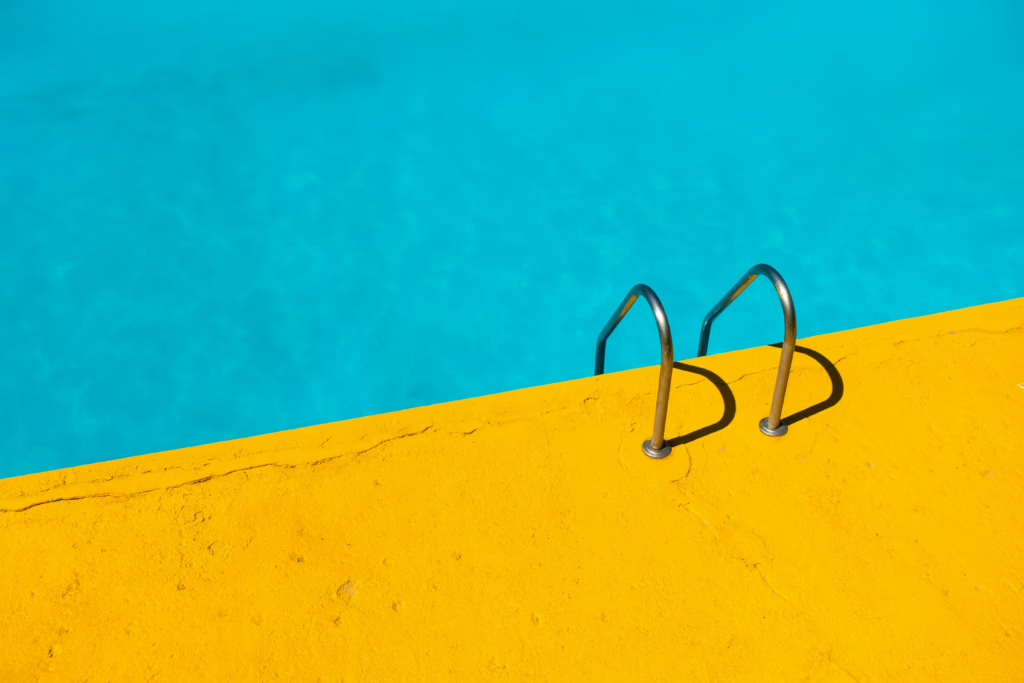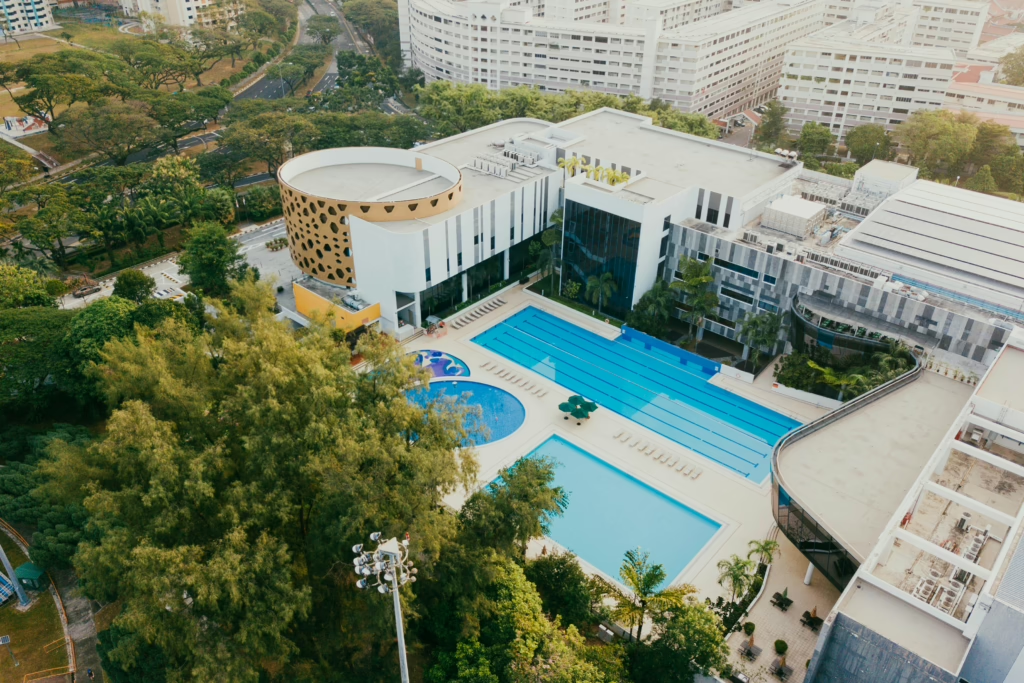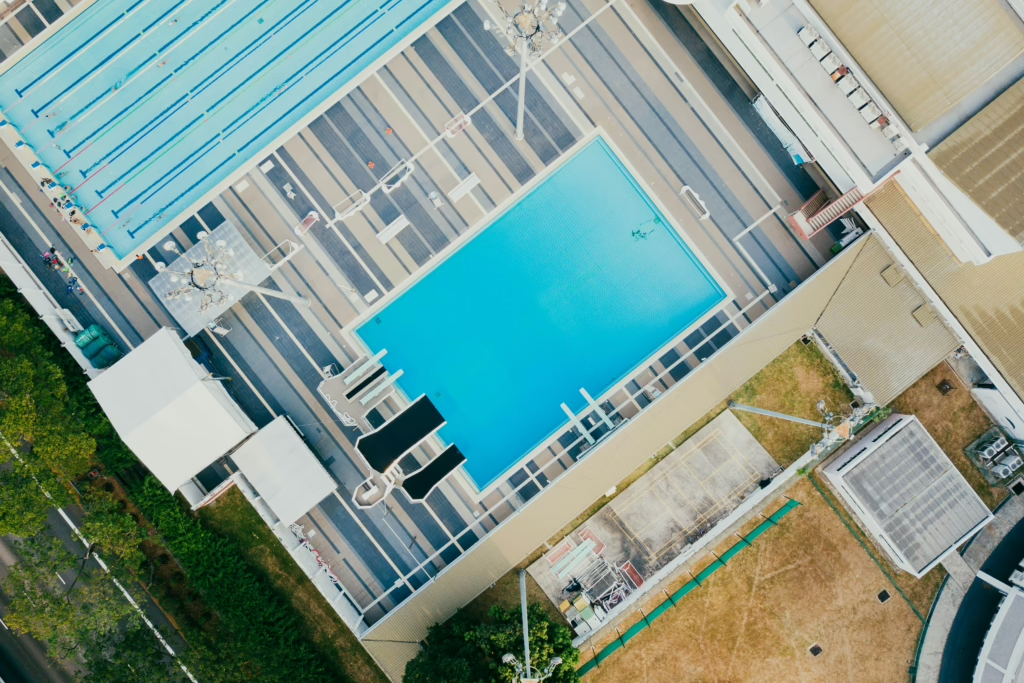With all the sunshine in San Diego, saltwater pools get used a lot, which makes regular care even more important. Whether it’s a tiny fix or a bigger repair, knowing what can change the cost helps you stay ready and feel confident. With PoolLogic San Diego, the best saltwater pool repair in San Diego, you’ll know your pool is in great hands, and your wallet won’t be caught off guard.
The cost to repair a saltwater pool can vary depending on a few things, like how old your system is, what kind of damage you’re dealing with, and how well the pool’s been maintained. Labor, parts, and even emergency calls can all add up.
But knowing what affects the price makes it easier to plan ahead. If you’re searching for “saltwater pool repair near me,” it’s smart to look for experts who explain their services clearly and care about keeping your pool in top shape.
Why Pool Repair Costs in San Diego Can Be Higher
San Diego’s environment plays a significant role in pool maintenance:
1. Salt in the Air Means More Rust
If you live near the coast, salty air can wear down your pool’s metal parts faster, so don’t be surprised if repairs come up more often.
2. Minerals in the Water Can Leave a Mark
San Diego’s hard water has lots of minerals that leave scale behind on your pool tiles and equipment. It doesn’t just look bad, it can mess with how your system runs, too.
3. Year-Round Debris
San Diego’s mild weather means people use their pools all year, but that also means more chances for leaves, dirt, and other debris to pile up. Over time, all that junk can clog filters and put extra stress on your pool system.
Key Takeaway
Owning a saltwater pool in San Diego offers many benefits, but it’s essential to be aware of the local factors that can influence maintenance and repair costs. Staying on top of maintenance, keeping San Diego’s coastal climate in mind, and setting aside a repair budget can help you enjoy your pool without surprises.
Saltwater Pool Gear: What You Might Need to Budget For
Saltwater pools are loved in San Diego for being easier on the skin and using fewer harsh chemicals. But keeping one in good shape means using a few key pieces of equipment, and over time, those can add to your pool costs. Here’s what you’ll want to keep an eye on:
1. How the Salt Chlorine Generator Affects Your Costs
The salt chlorine generator’s job is to convert salt into chlorine, keeping the pool water clean and safe.
- Cost Range: Installing a salt system for an in-ground pool can set you back somewhere between $500 and $2,500, depending on what kind of setup you go for.
- Maintenance: A salt cell replacement usually costs around $700 to $1,100. With regular upkeep, it should last anywhere from 3 to 7 years.
2. Pump and Motors
Pumps and motors circulate water through the pool’s system, ensuring proper filtration and sanitation.
- Cost Range: or in-ground pool pumps, you’re generally looking at around $690 to $920, depending on the brand and its features.
- Maintenance: In San Diego, repairing a pump motor usually costs between $250 and $500. It really depends on what’s wrong and how complex the fix is.
- Features: Today, many pool pumps are packed with helpful extras, things like digital screens, automatic cleaning functions, and settings that help save energy and lower your power bill, too.
3. Filters and Filtration Systems
Filters remove debris and impurities, keeping the pool water clear and healthy.
- Cost Range: For in-ground pools, filters usually cost between $500 and $1,600, depending on the type and brand.
- Types:
- Sand Filters: These are budget-friendly and simple to maintain—great for basic pool care.
- Cartridge Filters: They give you better water clarity, but you’ll need to clean them more often.
- Diatomaceous Earth (DE) Filters: These offer the best filtration quality, but they’re a bit pricier and need more careful handling during maintenance.
Key Takeaway
Maintaining a saltwater pool in San Diego involves investing in essential equipment like salt chlorine generators, pumps, and filters. Understanding the costs associated with each component helps in budgeting ensures your pool remains a refreshing retreat for years to come.
Labor Costs: The Human Element
San Diego saltwater pool maintenance isn’t just about the equipment; it’s also about the skilled professionals who keep everything running smoothly. Let’s explore the human element behind pool repairs and what it means for your wallet.
1. Leak Detection
Detecting a leak isn’t always as straightforward as it seems. Professionals use specialized equipment to find the source of the leak. In San Diego, leak detection services typically cost around $350 for a basic inspection, which includes visual checks and dye tests. More advanced diagnostics can range between $500 and $1,000.
2. Repair Work
Once the issue is identified, repair cost can vary:
- Minor Repairs: Fixing small leaks or replacing worn-out seals may cost between $350 and $2,700, depending on the severity and location of the leak.
- Major Repairs: Addressing significant problems like underground plumbing leaks can be more labor-intensive, especially if excavation is required.
3. Regular Maintenance
Scheduled routine maintenance helps prevent major issues. In San Diego, weekly pool cleaning services range from $80 to $150 per month, depending on the pool size, accessibility, and service level.
Key Takeaway
While equipment is essential, the expertise of pool professionals ensures your saltwater pool remains in tip-top condition. Investing in skilled labor not only fixes problems but also helps prevent future issues, keeping your pool a safe and enjoyable place for everyone.
The Hidden Cost Multipliers
Maintaining a saltwater pool in San Diego is like caring for a pet, it brings joy but also requires attention and care. Beyond the visible expenses, there are factors that can unexpectedly increase repair costs. Let’s see what these hidden cost multipliers are, and understand how they impact your pool maintenance budget.
1. Age and Obsolescence
As pools get older, some of their parts can stop working well or become outdated. It might be tricky, or pricey, to find new pieces to replace them. That means fixing up an old pool can cost more. For example, giving an older pool a fresh new surface can cost anywhere from $7,000 to $15,000, depending on how big it is and what it’s made of.
2. Interconnected System Issues
A pool works like a team; every part needs to do its job so that everything runs smoothly. If one part, like the pump, stops working properly, it can make other parts, like the filter, work too hard and break down too. For example, fixing a leaky pipe can cost between $200 and $1,000, depending on how bad the leak is and how easy it is to reach.
3. Access Difficulties
Where our pool is and how easy it is to get to can make a big difference in how much repairs cost. If a pool is in a tricky spot, like behind tight fences or on a steep hill, it might take more time and effort to fix things. For example, fixing a crack in the pool’s surface can cost anywhere from $500 to $5,000 or more, depending on how big and deep the crack is and what the pool is made of.
4. Water Chemistry Damage
Keeping the water in your pool balanced is super important. If the water isn’t just right, it can start to damage metal parts and cause buildup that clogs pipes and filters. Skipping regular chemical care can lead to expensive repairs and make your pool equipment wear out faster.
Key Takeaway
Understanding these hidden cost multipliers helps in proactive pool maintenance. Regularly scheduled inspections, timely repairs, and proper chemical balance can prevent unexpected expenses, ensuring your San Diego saltwater pool remains a source of joy and relaxation for you and your family.
DIY vs Professional Repairs: The Cost-Benefit Analysis
Taking care of a saltwater pool in San Diego can be fun and super satisfying! But when something breaks, you might ask yourself: ‘Should I try to fix it or call a pool expert?’ Let’s take a look at both choices to help you decide what’s best for your pool and your wallet!
DIY Repairs: Taking the Plunge Yourself
Pros:
- Cost Savings: Handling minor repairs yourself can save you money. For example, patching a small liner tear might cost as little as $5 with a DIY kit
- Learning Experience: You’ll gain valuable knowledge about your pool’s systems and how they work.
- Flexibility: You can work on your schedule without waiting for a technician.
Cons:
- Time-Consuming: DIY maintenance can take 2-4 hours per week, including tasks like skimming, vacuuming, and chemical testing.
- Risk of Mistakes: Incorrect chemical balances or improper repairs can lead to bigger problems, such as algae growth or equipment damage.
- Initial Investment: Purchasing the necessary tools and chemicals can add up, with monthly DIY costs ranging from $110 to $200.
Professional Repairs: Calling in the Experts
Pros:
- Expertise: Professionals have proper training and experience to diagnose and fix issues efficiently, ensuring the job is done right the first time.
- Time-Saving: Hiring a professional frees up your time, letting you enjoy your pool without the hassle of maintenance.
- Comprehensive Care: Professionals can spot potential problems early, preventing costly repairs down the line.
Cons:
- Higher Costs: Professional services typically charge $100 to $200 per visit, which can add up over time.
- Scheduling: You may need to wait for an appointment, especially during peak seasons.
Key Takeaway
Deciding between DIY and hiring a professional pool repair service depends on your comfort level, how much time you can spare, and your budget. For any minor issues and routine maintenance, DIY can be cost-effective if you’re willing to invest the time and effort. But, for complex problems or if you prefer peace of mind, hiring a professional ensures our pool remains a safe and enjoyable place for everyone.
Preventive Maintenance: The Ultimate Cost Saver
Maintaining a saltwater pool in San Diego is like for a pet, it brings joy but also needs consistent attention. While repairs can be costly, regular preventive maintenance acts as a shield, protecting your pool from unexpected expenses. Let’s dive into how proactive care can be the ultimate cost saver for your saltwater oasis.
What is Preventive Maintenance?
Preventive maintenance involves regular tasks to keep your pool in top shape:
- Checking and balancing water chemistry: Ensures the water is safe and prevents damage to pool surfaces and equipment.
- Inspecting and cleaning filters and pumps: Maintains efficient circulation and filtration, reducing strain on the system.
- Monitoring salt chlorine generators: Ensures they function correctly, providing consistent sanitation.
- Regularly cleaning the pool: Removes debris and prevents algae growth.
By performing these tasks on a scheduled routine, you can avoid larger issues that require expensive repairs.
How Preventive Maintenance Saves Money
Investing in regular maintenance can lead to significant savings:
- Reduced Chemical Costs: Properly balanced water requires fewer chemicals. Saltwater pools typically cost around $70 to $100 annually for chemicals, compared to $300 to $800 for traditional chlorine pools.
- Lower Repair Expenses: Regular inspections can catch minor issues before they escalate, preventing costly repairs.
- Extended Equipment Lifespan: Well-maintained equipment lasts longer, delaying the need for replacements.
- Energy Efficiency: Clean filters and properly functioning pumps use less energy, reducing electricity bills.
Key Takeaway
Preventive maintenance is a smart investment that keeps your saltwater pool sparkling and safe. By staying proactive, you can enjoy endless fun in the sun while avoiding unexpected costs.
Common Repair Packages and Their Costs
Maintaining a saltwater pool in sunny San Diego is both fun and rewarding! But when it comes to repairs, it’s helpful to know what common services might cost. Whether it’s a simple tune-p or a complete system upgrade, understanding these costs can help you plan and keep your pool sparkling.
1. Basic Salt System Tune-Up
Think of this as a health check-up for your pool’s salt system. It involves cleaning the salt cell, checking salt levels, and ensuring everything runs smoothly. Professionals typically charge between $150 and $500 for this service, depending on the system’s condition and any additional maintenance needed.
2. Comprehensive Pump Rebuild
The pump is like the heart of your pool, circulating water to keep it clean. Over time, parts can wear out. Rebuilding the pump involves replacing worn components like seals and bearings. Costs can range from $200 to $500, depending on the extent of the rebuild.
3. Full Filtration System Overhaul
Your pool’s filter keeps the water clear by trapping dirt and debris. An overhaul might include replacing the filter media (like sand or cartridges and inspecting the housing. Depending on the type and size of your filter, this service can cost between $500 and $1,600.
4. Major Equipment Replacement Package
Sometimes, multiple components like the pump, filter, and salt cell need replacing. Bundling these replacements can be more cost-effective. A major equipment replacement package might range from $1,500 to $3,000, depending on the specific equipment and installation requirements.
5. Complete System Upgrade
Giving your whole pool system an upgrade can help everything run better and make it easier to take care of. This might mean adding a new saltwater system, a pump that saves energy, and a better filter to keep the water super clean. A full upgrade like this can cost between $2,000 and $5,000 or even more, depending on the cool features and new technology you choose.
Key Takeaway
Understanding the costs of common pool repairs helps you make informed decisions and budget effectively. Regular maintenance can prevent costly repairs down the line, ensuring your saltwater pool remains a refreshing retreat all year round.
Frequently Asked Questions
1. How often should I clean my salt cell?
You should check and clean your salt cell every 3 to 6 months or more often if you notice white crusty build-up (called scaling). This helps it keep making chlorine efficiently.
2. Is it normal for my salt level to decrease over time?
Yes! Salt can get diluted or splash out. Top-ups are normal. Especially after heavy rain or if you’ve had to add fresh water.
3. Why does my saltwater pool have low chlorine levels despite adequate salt?
Even with enough salt, your system might not make enough chlorine if the salt cell is dirty, worn out, or there’s a water chemistry imbalance.
4. What should I do if my salt chlorinator displays an error code?
Check your manual or look up the code online. Many error messages relate to flow problems, salt levels, or sensor issues. Don’t ignore them; they’re trying to help!
5. What’s the typical lifespan of a salt chlorinator?
Most salt cells last 3 to 7 years, depending on use and maintenance. If chlorine levels drop and cleaning doesn’t help, it might be time for a new one.
6. Is a saltwater pool truly maintenance-free?
Not quite! It’s lower maintenance than a chlorine pool, but you still need to test water, clean equipment, and occasionally replace parts.
7. How do I know if my salt cell needs replacement versus cleaning?
If cleaning doesn’t fix low chlorine issues or you see physical damage, it’s probably time to replace it.
8. Can I convert my traditional chlorine pool to saltwater myself?
While it’s possible for handy folks, it’s best to have a pro handle it to make sure the system works properly and safely.
9. How does San Diego’s hard water affect my saltwater pool?
Hard water can cause scaling, which builds up on your salt cell and makes it less effective. Regular testing and cleaning are super important here!
10. How can I reduce energy costs for my saltwater pool?
Try using energy-efficient pumps, automation systems, and running your pump during off-peak hours. Keeping your system clean also helps it run smoother!
Final Thoughts
Caring for a saltwater pool in San Diego means understanding both the fun and the responsibility that comes with ownership. With our 5-minute setup process, getting started is easy, and PoolLogic San Diego makes staying on top of pool health even easier with expert advice and friendly service. Knowing the potential costs, whether for equipment, labor, or hidden issues, helps you stay ahead of problems and avoid surprise bills.
If you’re searching for ‘the best saltwater pool repair near me’, choosing a team that understands local needs, from hard water challenges to coastal corrosion, is important. Regular preemptive maintenance, like salt cell cleaning and filter inspections, keeps your pool clean, energy-efficient, and enjoyable all year long.
Want to save money, enjoy your pool more, and avoid headaches? Contact us now and discover how simple pool care can really be!



